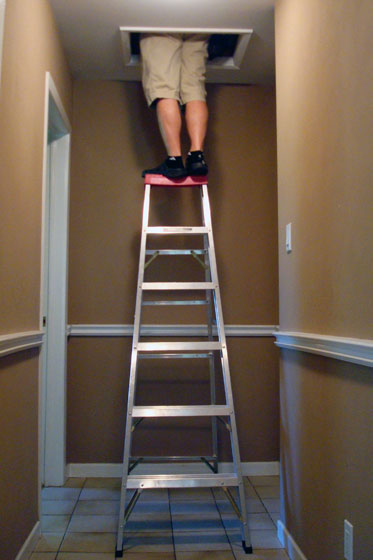“So you find that ominous puddle of water beneath your hot water heater. As you thoughtfully mop up the floor, … you are faced with one of two courses of action. The first, and… most soul-satisfying action would be to tear the unit bodily from the fittings and heave it lustily into the trash heap. But as your arms flex under this thought stimulus, you question your physical ability to perform this feat with all the zest and spontaneity the occasion requires. After all you are not as young and husky as you once were.”
Alfred J. Taylor in Popular Home Craft, February 1945
I received a copy of this magazine over the weekend, and it contained the article “Make That Water Heater Last.” The article talks of the demands of the Second World War and the impossibility of finding a plumber or buying a new heater when the old one starts to leak. It gives practical advice about how to “fortify your resolve” and “fix it yourself and make do.”
But beyond all of that, it is so well-written. The sentences are beautiful and funny. I couldn’t resist borrowing some of Alfred J. Taylor’s words to start this blog post, even if we did not have to make do when our “faithful old tank[s]” started to leak last year.
I’ve scanned the whole article to share it with you, in case you want a glimpse into home repair circa 1945 (don’t miss the last line… or the last two paragraphs… you know what? Just read the whole thing).
When we moved to the farm, we upgraded pretty much every system in the house. As part of our new geothermal heating and cooling system, we got two new hot water tanks. But within a few months of installing them, our hot water got super stinky. We didn’t want to shower it was so bad.
After a bit of online research I was able to figure out that the anodes in the tanks had likely become home to some malodorous bacteria. We decided to have the anodes removed, and our odor problems went away.
But a new problem arose. Without the anodes, the tanks were more susceptible to rust and likely wouldn’t last as long.
Last summer, we noticed some seepage around the bottom of the tanks. They had lasted just over 7 years before rusting out.

We started investigating our options and getting quotes.
Ultimately, we decided to go with one of the options our geothermal company had offered when they were fixing our stinky water issues: two new anode-less fiberglass tanks.

Not the cheapest solution, but hopefully the longest lasting one.
(For those asking, “What about tankless?” I don’t like tankless water heaters. I’ve used them a few places and the water never gets hot enough for me. I like my showers to be scalding. Also, our geo system generates some excess heat, which is captured by our dual tank system, so we feel like we’re pretty efficient and environmentally friendly right now.)
I often joke that we have a science experiment in our utility room between the water treatment system and the geothermal. Now we have two spacecraft as well with these capsule shaped tanks.
(And for Mr. Taylor, with his iron cement and assorted wrenches, thank you for your encouraging, educational and entertaining article.)
























